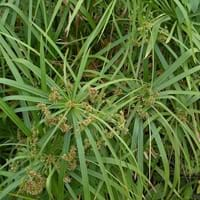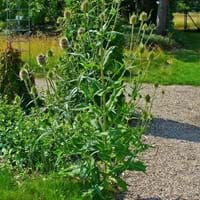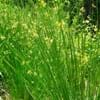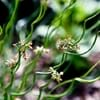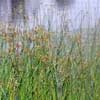Life Span
Annual and Perennial
Biennial
Type
Sedge or Rush
Flowering Plants, Herbs
Origin
Madagascar
Europe, Asia
Types
Not Available
Not Available
Habitat
Temperate Regions
Rocky areas, Semi desert, Subtropical climates
USDA Hardiness Zone
8-11
5-8
Sunset Zone
H1, H2, 8, 9, 12, 13, 14, 15, 16, 17, 18, 19, 20, 21, 22, 23, 24
21,22
Habit
Clump-Forming
Upright/Erect
Flower Color
Yellow green, Brown
Purple
Flower Color Modifier
Bicolor
Bicolor
Fruit Color
Non Fruiting Plant
Non Fruiting Plant
Leaf Color in Spring
Green, Dark Green
Green
Leaf Color in Summer
Dark Green
Green
Leaf Color in Fall
Dark Green
Green
Leaf Color in Winter
Dark Green
Light Green
Leaf Shape
Subulate
Ovate
Plant Season
Spring, Summer, Fall, Winter
Summer, Fall, Winter
Sunlight
Full Sun, Partial Sun
Full Sun
Growth Rate
Fast
Very Fast
Type of Soil
Clay, Loam, Sand
Clay, Loam
The pH of Soil
Acidic, Neutral
Acidic, Neutral, Alkaline
Soil Drainage
Poorly Drained
Average
Bloom Time
Early Summer, Summer
Summer, Late Summer
Tolerances
Drought
Not Available
Where to Plant?
Container, Ground, Pot
Ground, Pot
How to Plant?
Cuttings
Seedlings, Stem Planting
Plant Maintenance
Medium
Medium
Watering Requirements
Average Water Needs
Average Water Needs
In Summer
Lots of watering
Lots of watering
In Spring
Moderate
Moderate
In Winter
Average Water
Average Water
Soil pH
Acidic, Neutral
Acidic, Neutral, Alkaline
Soil Type
Clay, Loam, Sand
Clay, Loam
Soil Drainage Capacity
Poorly Drained
Average
Sun Exposure
Full Sun, Partial Sun
Full Sun
Pruning
Remove damaged leaves, Remove dead branches, Remove dead leaves
Remove damaged leaves, Remove dead branches, Remove dead leaves, Requires very little pruning
Fertilizers
All-Purpose Liquid Fertilizer
All-Purpose Liquid Fertilizer
Pests and Diseases
Red spider mite, Spider mites
Pests and diseases free
Plant Tolerance
Drought
Drought
Flowers
Insignificant
Showy
Flower Petal Number
Single
Single
Foliage Texture
Medium
Coarse
Foliage Sheen
Glossy
Glossy
Attracts
Butterflies, Hummingbirds
Birds
Allergy
Not Available
Skin irritation
Aesthetic Uses
Showy Purposes
Showy Purposes
Beauty Benefits
Not Available
Not Available
Environmental Uses
Air purification
Air purification
Medicinal Uses
Antibacterial, Antifungal
No Medicinal Use
Part of Plant Used
Root
Flowers
Other Uses
Not Available
Dried heads are used in floristry, Used as Ornamental plant
Used As Indoor Plant
Yes
No
Used As Outdoor Plant
Yes
Yes
Garden Design
Bog Garden, Container, Cutflower, Feature Plant, Houseplant, Tropical, Water Gardens
Wildflower
Botanical Name
Cyperus Alternifolius
DIPSACUS fullonum
Common Name
Umbrella Papyrus, Umbrella Sedge, Umbrella Palm, Umbrella Plant
Fuller's Teasel
In Hindi
Umbrella Plant
Fuller's Teasel
In German
Dach-Anlage
Fullers Karde
In French
Parapluie Plante
Cardère à foulon
In Spanish
Umbrella Plant
Cardo de Fuller
In Greek
ομπρέλα φυτών
Νεράγκαθο του Fuller
In Portuguese
Planta do guarda-chuva
Carda de Fuller
In Polish
parasol roślin
Fullera Oset
In Latin
O Planta
Teasel Fullonis
Phylum
Magnoliophyta
Anthophyta
Class
Liliopsida
Magnoliopsida
Family
Cyperaceae
Dipsacaceae
Clade
Angiosperms, Commelinids, Monocots
Angiosperms, Asterids, Eudicots
Tribe
Cypereae
Not Available
Subfamily
Cyperoideae
Dipsacoideae
Properties of Umbrella Sedge and Fuller's Teasel
Wondering what are the properties of Umbrella Sedge and Fuller's Teasel? We provide you with everything About Umbrella Sedge and Fuller's Teasel. Umbrella Sedge doesn't have thorns and Fuller's Teasel doesn't have thorns. Also Umbrella Sedge does not have fragrant flowers. Umbrella Sedge has allergic reactions like Not Available and Fuller's Teasel has allergic reactions like Not Available. Compare all the properties and characteristics of these two plants. Find out which of these plant can be used as indoor plant. If you are interested to decorate your house and garden, find out aesthetic uses, compare them and select the plant which will beautify your surrounding. Along with beautification, try comparing medicinal and edible uses of Umbrella Sedge and Fuller's Teasel and you can choose the plant having best and most benefits.
Season and Care of Umbrella Sedge and Fuller's Teasel
Season and care of Umbrella Sedge and Fuller's Teasel is important to know. While considering everything about Umbrella Sedge and Fuller's Teasel Care, growing season is an essential factor. Umbrella Sedge season is Spring, Summer, Fall and Winter and Fuller's Teasel season is Spring, Summer, Fall and Winter. The type of soil for Umbrella Sedge is Clay, Loam, Sand and for Fuller's Teasel is Clay, Loam while the PH of soil for Umbrella Sedge is Acidic, Neutral and for Fuller's Teasel is Acidic, Neutral, Alkaline.
Umbrella Sedge and Fuller's Teasel Physical Information
Umbrella Sedge and Fuller's Teasel physical information is very important for comparison. Umbrella Sedge height is 45.70 cm and width 45.70 cm whereas Fuller's Teasel height is 150.00 cm and width 30.00 cm. The color specification of Umbrella Sedge and Fuller's Teasel are as follows:
Umbrella Sedge flower color: Yellow green and Brown
Umbrella Sedge leaf color: Green and Dark Green
Fuller's Teasel flower color: Purple
- Fuller's Teasel leaf color: Green
Care of Umbrella Sedge and Fuller's Teasel
Care of Umbrella Sedge and Fuller's Teasel include pruning, fertilizers, watering etc. Umbrella Sedge pruning is done Remove damaged leaves, Remove dead branches and Remove dead leaves and Fuller's Teasel pruning is done Remove damaged leaves, Remove dead branches, Remove dead leaves and Requires very little pruning. In summer Umbrella Sedge needs Lots of watering and in winter, it needs Average Water. Whereas, in summer Fuller's Teasel needs Lots of watering and in winter, it needs Average Water.
